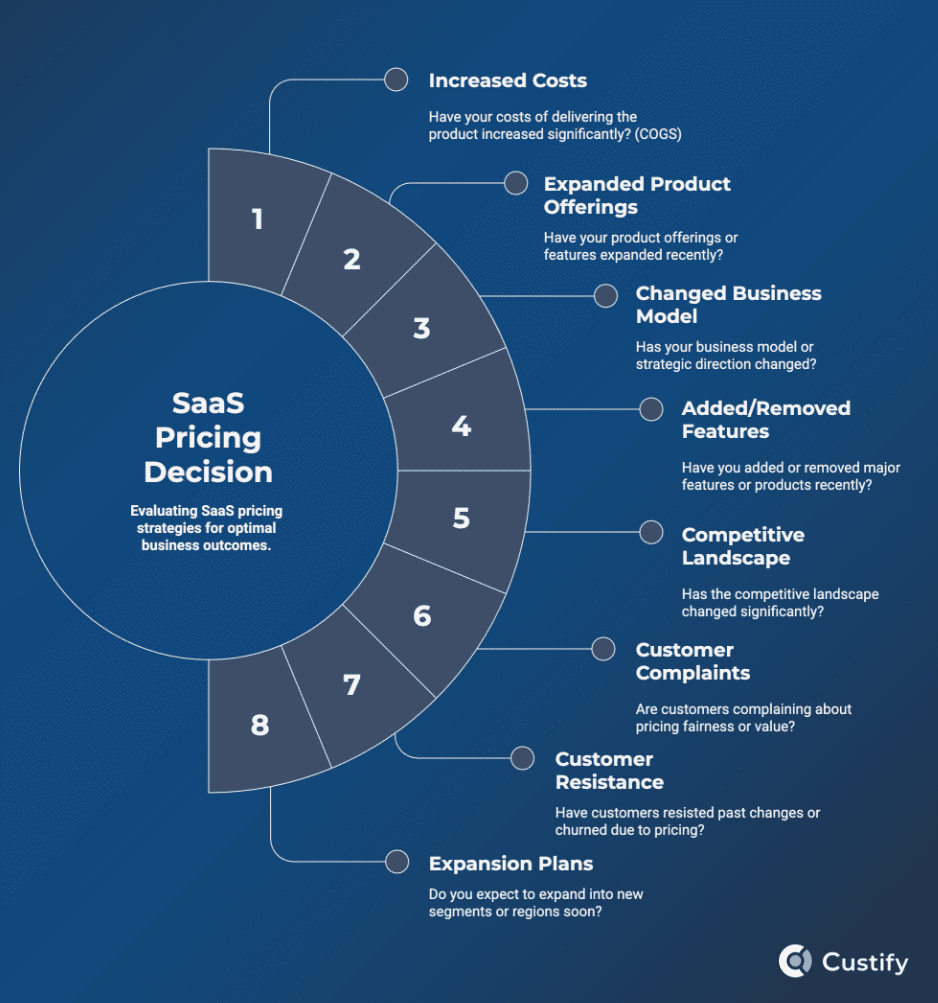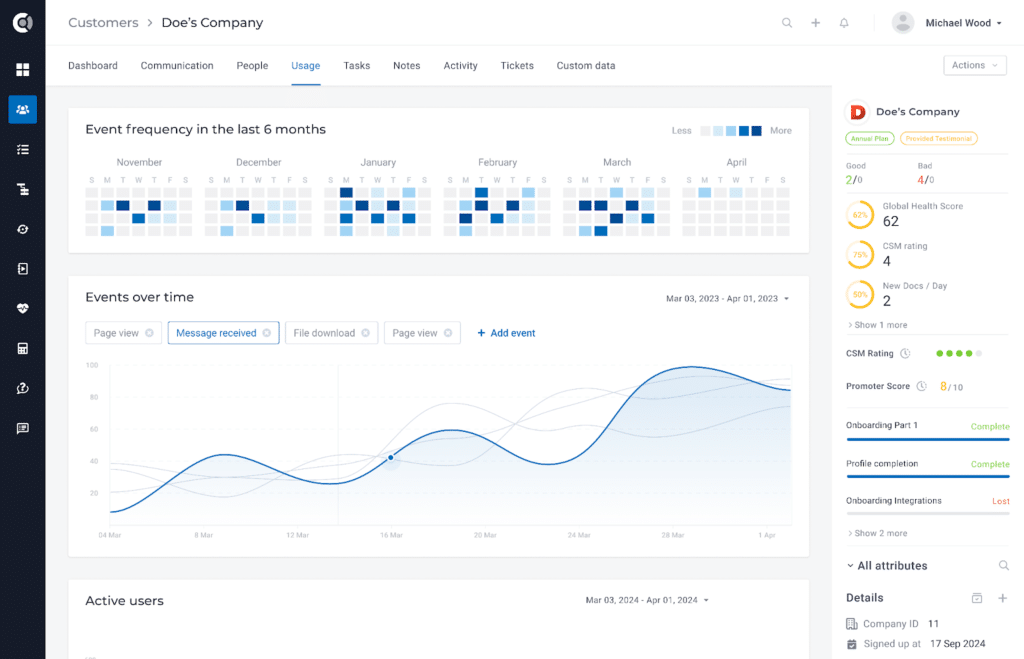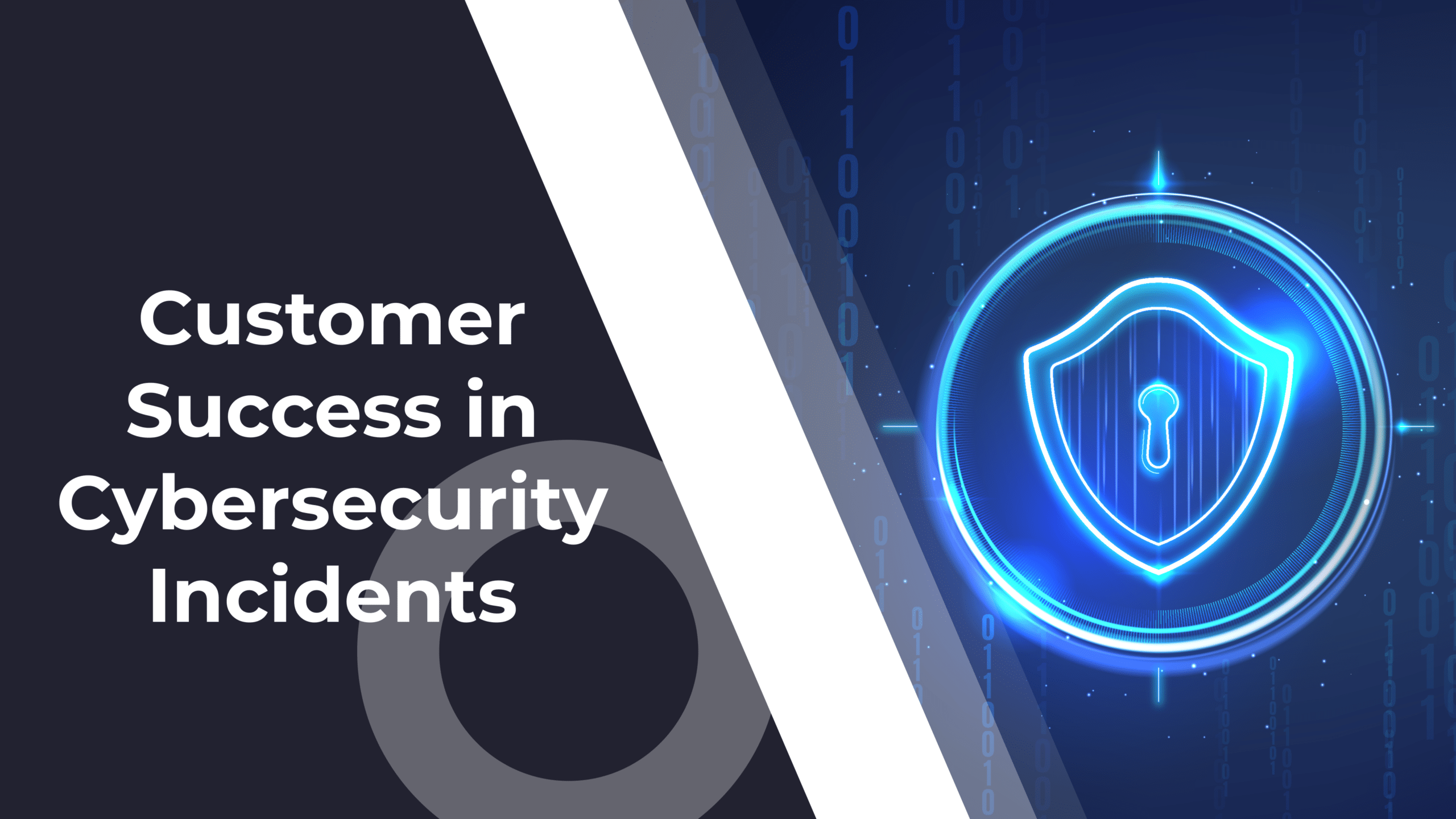The SaaS world can be unforgiving.
A single, quick decision can lead to 50% annual churn. Another can double your ARR.
It’s a dog-eat-dog world where all the dogs are your competitors. To survive, you need to think strategically, anticipate every SaaS trend, and stay at the top of your game.
Pricing changes are a common tactic among SaaS leaders. It’s a way to consolidate your listings, but those price changes can result in downgrades, churn, and quadruple the work for your CSMs. So today we’re going to explore how to change your listings without losing your entire customer base, but actually stimulating growth and expansion through upsells.
The Premise: Preparing for a Pricing Change
Let’s assume you have to make a pricing change. You’re going to have to decide four things before going live with it:
- What the change is
- How you’ll implement the change
- How you’ll communicate the change
- How to pivot if it doesn’t work
Working in CS, I’ve talked to many CSMs who were upset their pricing model changed, and all of a sudden, they’re struggling to justify the decision and keep legacy customers tied to their old, higher-tier plans, despite the new options being cheaper and making more sense for their business. That’s because many times, companies have a process in place for upsells but don’t have one for downsells, even if the alternative is full customer churn.
At the other end of the spectrum, I’ve seen companies raise their prices by 25% and lower their growth rate to under 10%. A move like this can cripple your SaaS and have an adverse effect compared to what you intended. For example, say your COGS increases by 35%, so you decide to raise your prices. The solution works for a few months, then suddenly your customer base stops growing like it used to. Meanwhile, churn hasn’t slowed down, and, in fact, has increased as customers are more hesitant when seeing the new price tag upon renewal.
So, how do you know when the time is right and how to implement such a change? To understand that, we have to look at the types of price changes you can make.
1. Types of Pricing Changes
There are, of course, several types of pricing changes that can lend themselves to different strategies.
- Increasing prices. Despite being the most common price change, it comes with significant challenges in communication, customer service, sales, and marketing.
- Lowering prices. Occasionally, lowering prices might be necessary to readjust your business model and bring in more customers.
- Adding higher subscription tiers. Sometimes in SaaS, we see customers that require more care and attention than can be justified by our subscription prices. Other times, those customers need higher usage limits or extra features. These are just a few examples of times when you need to step in and add higher tiers to your pricing model.
- Adding lower subscription tiers. Other times, some of your potential customers don’t need high usage numbers but would still like to try your product. Maybe these customers fall outside the initial scope of your product, but consider – they’re willing to support you financially. Finding a way to accommodate lower tiers can sometimes provide the necessary critical revenue to keep your business running.
- Consolidating subscription pricing. When you realize your pricing model has become outdated, slightly confusing, or overly complex, it’s time to consolidate it. That means doing the appropriate research and reducing the number of tiers to be less confusing and more in line with customer expectations.
- Changing the pricing model or strategy. Lastly, sometimes you need an entirely different pricing strategy to actually run a profitable business. Whether you’re switching from per-user to per-feature pricing or from value-based to free trial pricing, this type of change will involve significant efforts from the entire team.
2. Why Make Pricing Changes at All?
Companies resort to a pricing change for some key reasons:
- Changing priorities. If the company redesigns its business model, chances are its prices also need to shift slightly to accommodate the new direction.
- Changing products. When products evolve, so does the cost of production. If you’re adding products or removing them, your cash flow might look entirely different, and a new pricing model can help balance that out.
- Changing costs of goods sold. There can be plenty of reasons why the cost of delivering your product or service increases (or, rarely, decreases). These changes often result in a need for a higher price point.
- Changing business landscape. In a competitive landscape, businesses either evolve to meet and exceed their competition or get left behind. Case in point, Intel’s CEO recently announced massive layoffs due to their lack of agility in competing in AI. The impact of such shifts can be mitigated by changing your pricing strategy.
- Need to expand. Speaking of shifting landscapes, in some areas of business, it’s imperative to expand your portfolio or get crushed by the complexities of running a profitable company. When faced with a need to expand, it’s worth reexamining your pricing model to see if it’s still relevant.
According to a 2024 report on the State of SaaSOps, we’re currently in an era of austerity, where “every dollar spent on SaaS needs to demonstrate clear value.” The updated report from a year later shows the trends continuing – with 13% of SaaS spending cuts being due to other SaaS apps’ price increases.
Amidst such scrutiny, the pricing model you pick couldn’t be more important – you’ve got to understand customers and help them reach their goals at an affordable price point.
3. Observing Customer Wants and Needs
Adopting a customer mindset can give you the necessary support to make informed decisions. But it’s not enough. You should also learn about the psychology of pricing:
Tactics such as charm pricing are ubiquitous – we’ve all seen price tags with “.99” at the end. Other psychological tactics include price anchoring, decoy, odd-even, and center stage pricing. All of these are fundamentally rooted in how consumers think about a purchasing decision.
To help you make smarter price change decisions, let’s distill the logic behind these tactics and add some common insights about customer behavior:
- Customers want to feel like they’re getting a good deal.
- Customers are inherently biased towards the left digits of your price point.
- Customers in some industries prefer making a premium purchase.
- Customers often gravitate towards the middle pricing tier.
- Customers want adequate communication of new pricing
- Customers appreciate you being real instead of over-apologizing.
- Customers want stability in their bills.
- Customers don’t want to feel scammed.
- Customers don’t want to pay more than they have to.
- Customers don’t want features they don’t use.
- Customers want to see the value.
- Customers want products that evolve and improve.
- Customers will resist change, no matter how small.
- Customers either want or would appreciate loyalty rewards.

The Execution: Follow a Customer Success Strategy to Prevent Churn and Drive Upsells
When implementing a price change, it’s vital to be strategic and align with CS, sales, support, account management, and any other customer-facing team before the change goes live.
If possible, gauge customer sentiment regarding specific changes, use AI retention tactics to be more data-driven, strategic, and not miss any obvious red flags. Let’s break down everything you should do before going forward with such a big change.
1. Align with All Customer-Facing Teams
We’ve seen many times how strategic, leadership-level decisions are taken without clear CS input or at least informing CS. This forces CSMs to defend price changes when they have never even heard the logic behind those changes, let alone had the chance to agree with those changes.
To avoid miscommunication leading to unnecessary customer friction, increased CSM workloads, and customer churn:
- Discuss any potential price change ahead of time with the heads of all customer-facing departments. If better solutions emerge, don’t be afraid to pivot.
- Explain the need for the price change to your team: what’s the cost of not raising the price – sometimes, that’s all it boils down to.
- Brainstorm a strategy – every step you decide to take should be written down along with a strategy for communicating that point to customers.
- Settle on a few ideas, don’t try to do everything. It can be tempting to rethink your entire strategy, change your product, add a higher tier, and devise a communication strategy to keep legacy accounts paying their original price point. But ask yourself – is that doable? Consider the scope of your changes and pace yourself.
2. Create a Strategy for Making the Pricing Change
Next, we come to the actual strategy. I’ve found that most strategic decisions, such as a price change, need a few clear things settled before you proceed:
- What is your objective? Write it down clearly.
- What happens to existing customers? If you’re not considering existing accounts, they might feel left out and churn.
- How do CSMs communicate the change? CS should have clear scripts for all customer categories, along with emails, Slack messages, in-app notifications, and everything else necessary to ensure the transition is as smooth as possible.
- How should support handle complaints? What are the most likely complaints you’re about to receive? How are you going to handle them? Your customer support team should be equipped with tools, scripts, and special offers in case customers are about to churn.
- How can sales pitch new plans? If you’re adding new subscription tiers, those will need to be sold, so try to answer:
- What’s the pitch for new customers?
- What’s the pitch for upsells?
- What’s the pitch to prevent downsells?
- What’s the play-by-play? Lastly, but maybe most importantly, you’ll need a full playbook for implementation that tells you what to do in each stage, who the owner is for every part of the process, and what to do in case things don’t go according to plan.
3. Address the 4 Common Issues with Price Changes
Throughout our research, we’ve uncovered 4 negative qualities of pricing changes that you need to consider. For each one, think about turning it into a corresponding positive quality.
- Unsustainable ➜ Sustainable. Unsustainable changes don’t bring in enough revenue to keep the business running long-term. While shorter gains might be observed, the larger picture will always look more dire. Your goal here should be to think of long-term metrics like customer lifetime value, CAC payback period, and your retention, churn, and expansion rates.
- Unjustifiable ➜ Unquestionable. If you’re struggling to find arguments for your price change, take a step back, go through the decision flow again, and look for any cracks in your logic. Price change decisions should be unquestionable and leave no room for doubt among your team.
- Unsellable ➜ Selling points. Remember that every new price tier should be something potential customers are willing to pay for. If you’re adding a pricing tier that nobody wants, you’re not saving costs; you’re doing the opposite.
- Uninspired ➜ Strategic. Lacking inspiration is something common when making business decisions – however, the solution is simple. Simply sitting down with your team, board, and/or advisors can help you think strategically and come up with obvious solutions that would’ve otherwise remained hidden.
Even something so simple as a small chat with the lead CSM for an account can uncover truths you were previously blind to. It’s all in the eye of the beholder, if you.
4. Put Together a Risk Assessment Matrix
Next up, I recommend putting together a risk assessment matrix as you would for any project. Think things like:
- Old customers complain that they pay more than new ones
- New customers find out they pay more than legacy ones
- Customers realize they only need one premium feature, but have to pay for five
- Customers demand downgrades but are contractually locked into their plan
What will you do for each scenario? Do you have some emergency exits for your plan? Risk matrices are an extremely helpful business management tool because they help you plan ahead for the worst-case scenarios.
5. Use AI to Gauge Customer Sentiment
For each customer or customer segment about to be affected by your price change, you should ensure you have an accurate assessment of their sentiment score and global health score.
Each account goes through many different stages during its lifetime, and your announcement might come at a bad time.
Picture this: you’re about to click send on a price increase notification to a customer who’s already dissatisfied, not using your product, and about to churn. Or worse yet, that notification could go out automatically, leaving you no time to react.
To bypass these risks, use AI to gauge customer sentiment, make sure your customer health scores are capturing the most important insights, and always act on those insights you glean.
6. Find the Right Mix of Value, Timing, Impact, and Investment
A price change shouldn’t come alone. If all you’re doing is changing the price, it might feel like just a money grab. You have to make sure there’s a good balance between value offered, the timing of the change, the potential impact, and the money you’re spending to make the change go live.
That’s precisely why these four elements should be thought of separately. You can use your CSP together with AI to figure out:
- The perfect value addition – what can you add to justify the price change?
- The perfect time to change the price – when is the best time to implement it?
- The expected impact of the change – who will it affect and how much?
- The amount of money you can spend on it – can you budget everything necessary to make the change?
7. Soft Launch and A/B Test, If Possible
A great way to implement a price change is to do it slowly and work based on a timeline that you lay out on a calendar for the entire team to see. Some ideas:
- Start with the group of customers who are likely to be the least affected by it.
- Roll out the change in stages, moving from segment to segment until everyone learns of the new pricing.
- Create separate engagement strategies for each segment of customers affected by the pricing adjustments.
- Do an A/B test – select a few customers and use different pricing changes or different strategies to communicate the same change.
- Track your soft launch metrics and be prepared to adjust before the big price change goes live.
- Address downgrades before customers have time to think about them – with the right proactive strategy, you can prevent them entirely.
The Implementation: Track Everything Under the Sun and Make Adjustments
Preparing and launching a price change might seem like a large enough task, but you shouldn’t rest on your laurels, so to speak. The period immediately following a price change is critical to maintaining customer loyalty and cementing the price adjustment as the correct decision for your business.
Things to track at this stage:
- MRR, ARR, NRR
- CSAT, NPS
- CAC, Customer Lifetime Value, CAC Payback Period
- Customer support requests
- Renewals
- Upsells
- Churn
- Average Handle Time
- Every customer health score you have
- Customer Downgrades
How to Track and Pivot after a Pricing Adjustment
Measuring the impact of your price increase can be done in several ways:
- Health scores. Setting up customer health scores for the most important metrics from the list above can help you monitor them and gain insights in real time. Simply pick the ones that make the most sense for your use case, determine your benchmarks and weighting, and begin tracking.
- Signals. Signals are ways to automate customer health scores based on certain triggers. For example, you could have a signal that notifies you if a customer approaching renewal saw a 20% drop in feature usage.
- Automation flows. Apart from signals, you can set up more complex automation flows that execute specific sets of instructions based on more advanced or interconnected triggers. For example, if you see a usage drop, a decrease in customer communications, and declining success metrics, you could create a flow to notify the team, automatically send an email to the customer, and move them to a separate customer success playbook.
- AI. Using an LLM or specific AI features in your CSP, you can interpret customer data captured pre- and post-pricing change. This can give you highly-specific and actionable insights into customer behavior and whether you need to further adjust your pricing, roll back the changes, or keep things steady.
- Custify. Our platform can help you implement all three of these tracking methods so you can stay on top of your customers’ health and get insights into your recent pricing adjustments in real time, while ensuring stakeholders (such as your higher-ups) have full visibility.

Once you’re equipped with all these monitoring tools, your insights should tell you whether you need to make any microadjustments, emergency exits, or extra discounts for loyal customers.
FAQs about Pricing Changes, Downgrades, and Upsells
1. How should I support customer downgrades?
Simple: remember downgrades are preferable to full churn and should be treated as such. Prepare materials for downgrates (how-tos, guides, etc) and assist customers through the transition.
2. How can I raise prices without losing customers?
Test your pricing changes against a small group of customers – or implement A/B testing. Make sure you actually need to raise prices (rethink your decision tree). Lastly, only increase prices if you’re also increasing the perceived value of your offering.
3. How can I lower prices/tiers without losing revenue?
Think about how you can offer loyalty rewards to customers currently on a higher plan to prevent downgrades. Consolidate your prices to offset any losses with gains in other areas. Upsell lower-tier customers through a well-thought-out upsell strategy to recoup some of your losses on higher plans. Lastly, think about other ways that can help you generate revenue that are more sustainable.
4. How to introduce higher tiers and encourage upsells?
Align with your entire team on a strategy – make sure you’re actually increasing the value provided to higher-tier customers. Then, draft outreach strategies with your Sales and Customer Success teams – see what customers want, how you can demonstrate the added value to them, and when the best moment to reach out is. Use your customer success platform to monitor accounts and identify upsell opportunities, then reach out using your existing strategy. Don’t forget to do the appropriate research about the customers you end up reaching out to.
Summing Up
Making a price change will always be a gamble, no matter how much information you have or how prepared you are. Unseen consequences often come to light after you’ve made the change. That’s why you need a reliable ally for your efforts.
Feel like trying out Custify and seeing what it can do to help you reach your goals? Sign up for a free demo with our team and feel free to pick their brains about your upcoming price change – they have experience working with all kinds of SaaS and can most likely help you (no purchase necessary). Good luck!




